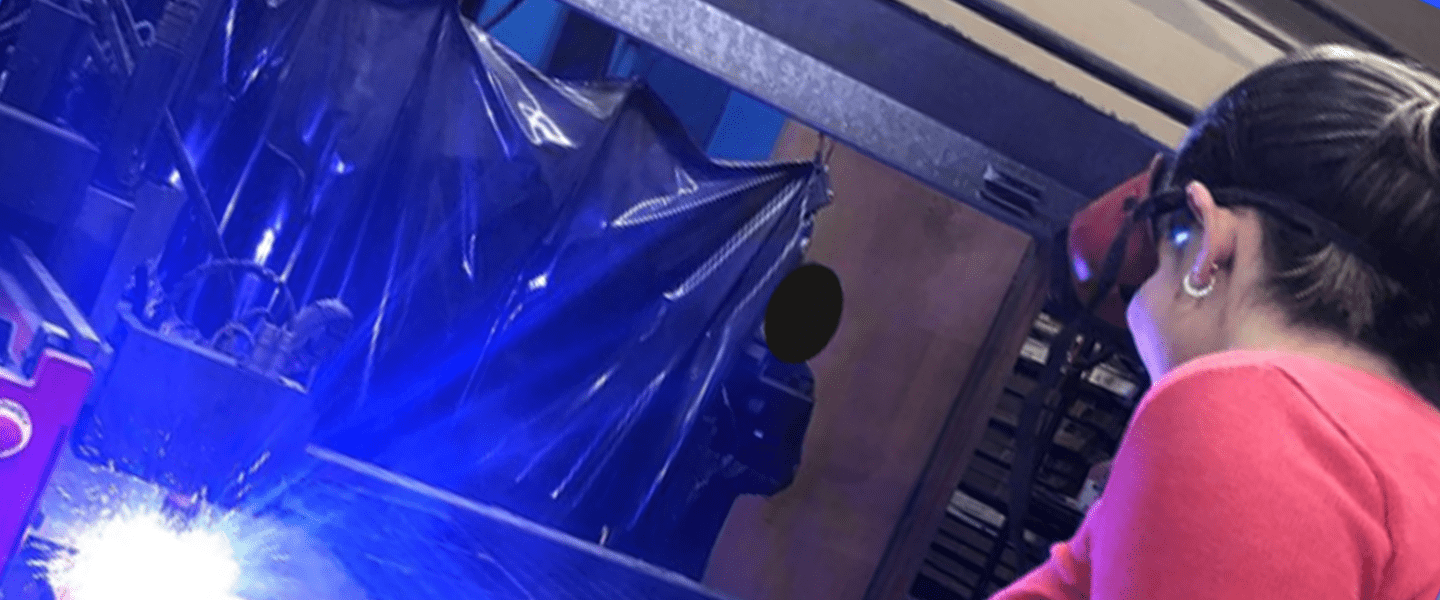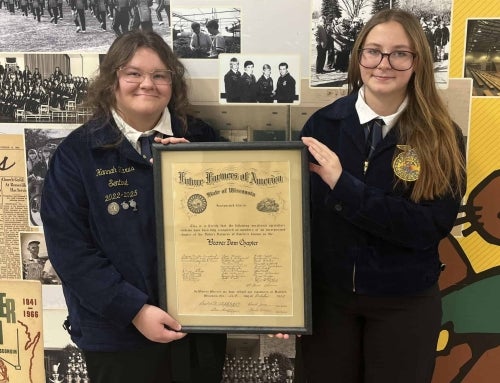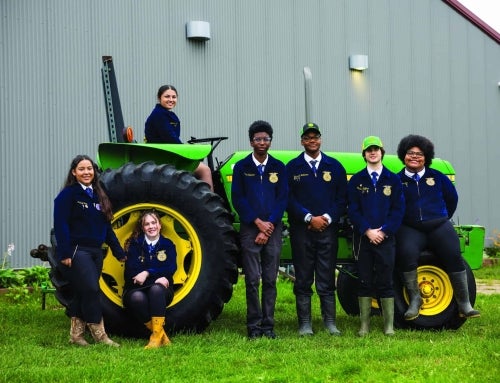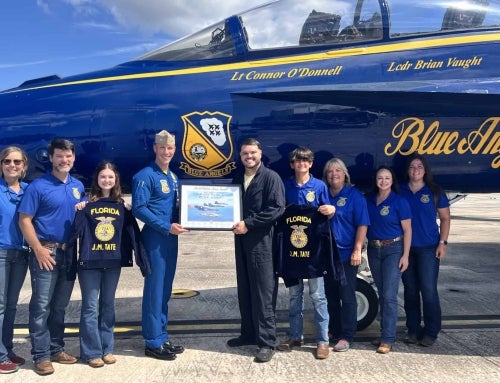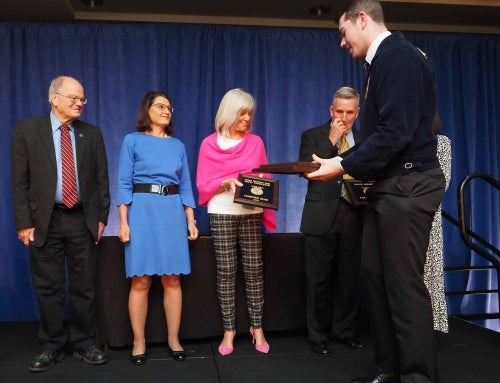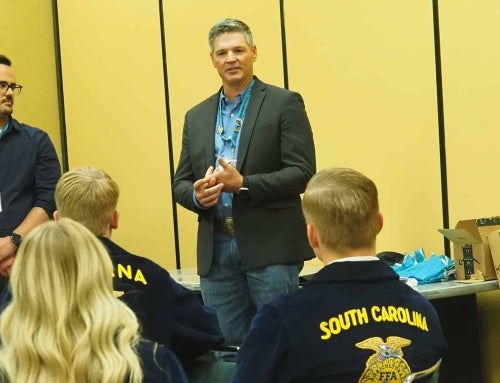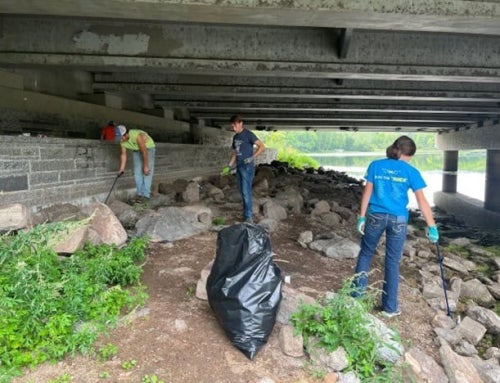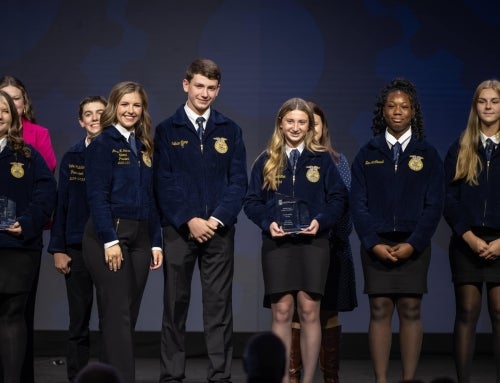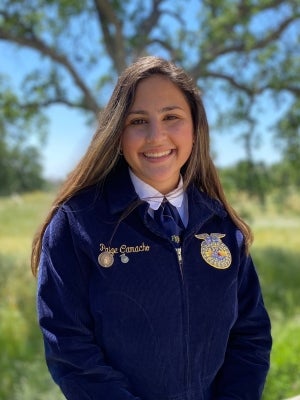
Paige Camacho researched how ultraviolet light affects welder health.
With summer comes awareness to apply sunscreen when spending time outside to protect your skin against the sun’s harmful ultraviolet (UV) rays. Did you know certain indoor environments also require the use of sunscreen?
In January 2021, Paige Camacho, a senior member of the O’Neals-Minarets FFA Chapter in California, conducted an in-depth study of how rays produced by thermal cutting in welding shops affect people who work in the welding industry.
“My dad teaches a welding and fabrication class at Fresno City College, and my parents are both past agriculture teachers, so I spend a lot of time in the shop,” says Camacho. “I knew that welding light can damage your eyes and skin. I wondered if light produced by thermal cutting was as damaging as the sun.
“Thermal cutting is a type of heat cutting that produces light, which comes out of machinery that produces UV rays,” she explains. “It’s less intense than the sun, but it can still damage the skin and eyes.”
Camacho researched how much time a person can spend thermal cutting before the need to apply sunblock for protection. While welders typically wear personal protective equipment (PPE) such as gloves, sunglasses and welding helmets, Camacho says people don’t usually wear PPE when thermal cutting.
Camacho borrowed equipment from a local community college to measure UV radiation produced by thermal cutting at relevant distances. She plugged those numbers into a formula from the National Institute of Occupational Safety and Health to determine permissible exposure time, which is the amount of time someone could be exposed to the light before the need to apply sunscreen.
Her findings were conclusive.
“With plasma cutting, from five feet away, permissible exposure time was 25 minutes, and at three feet, it was 4.17 minutes,” Camacho says. “For cutting, at five feet, it was 3.3 hours, and at three feet, it was 50 minutes. The three feet measurement is for the operator of the machine, and the five feet measurement simulates bystanders — people watching the process or just walking around the shop.”
Camacho shared her findings with her dad and her agriculture teachers.
“My dad and I now wear sunblock in the shop to protect ourselves, and he recommends his coworkers and students wear it in the shop,” she says. “My agriculture teachers recommend students wear sunblock in the shop, too.”
Camacho continues to work in the shop — now protected by sunscreen — and has high hopes for how her findings will increase safety in shop settings.
“I’m hoping that there is less skin damage caused in the shop because people are choosing to protect themselves,” Camacho says. “It’s very rewarding to know the hard work I put in can help people.”

